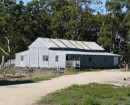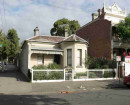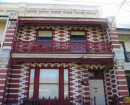THE ANCHORAGE
3273 POINT NEPEAN ROAD SORRENTO, MORNINGTON PENINSULA SHIRE
-
Add to tour
You must log in to do that.
-
Share
-
Shortlist place
You must log in to do that.
- Download report
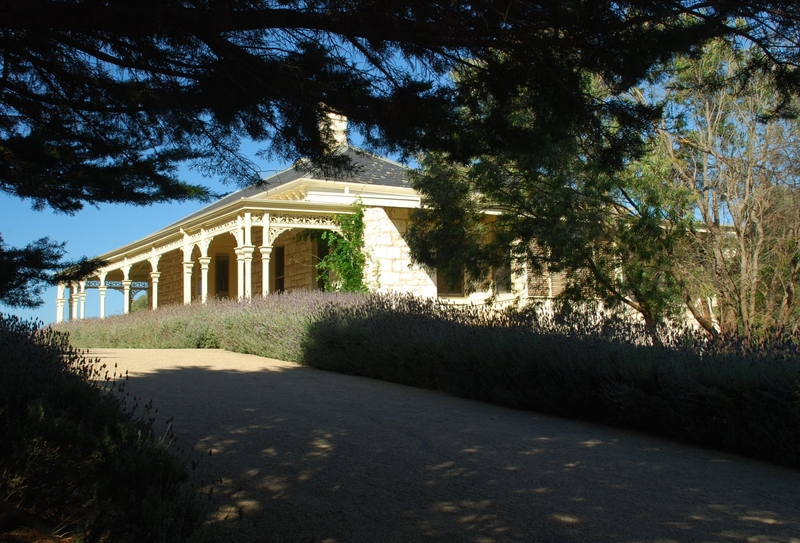

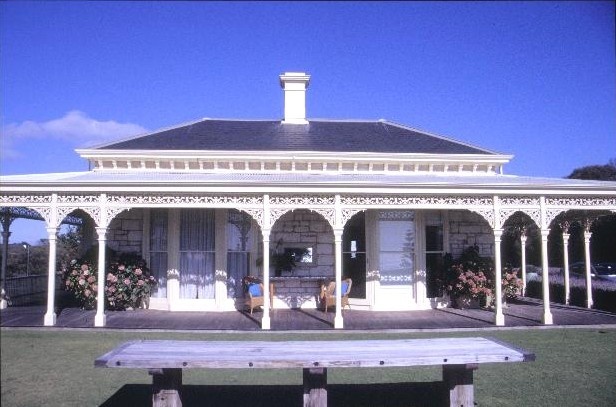

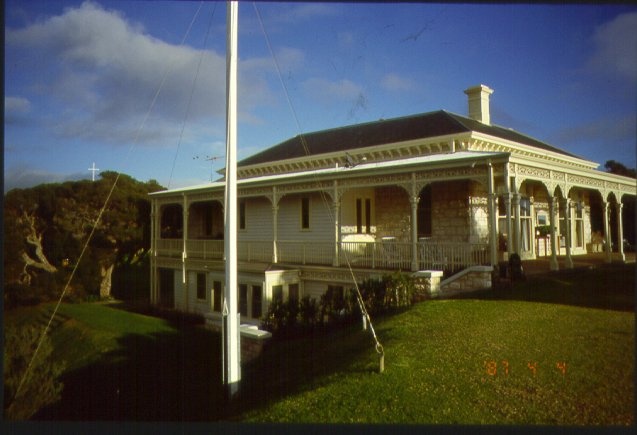
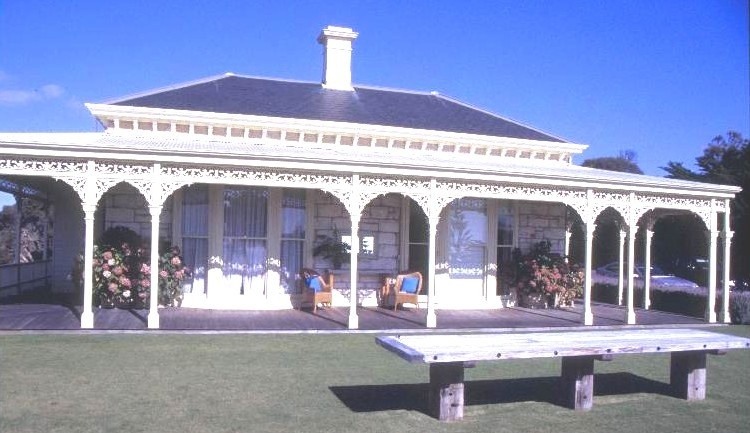
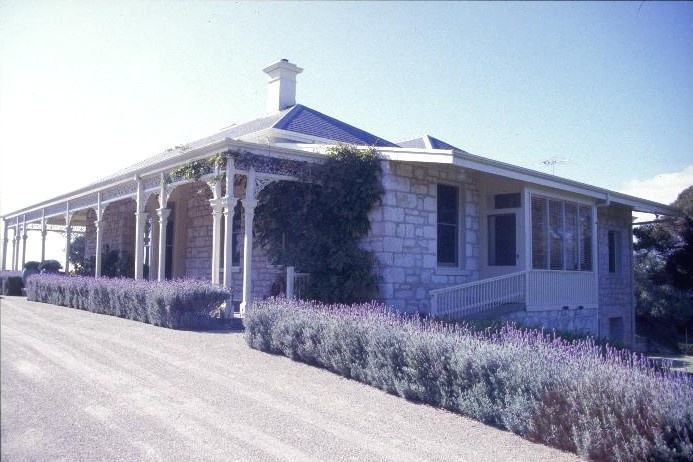
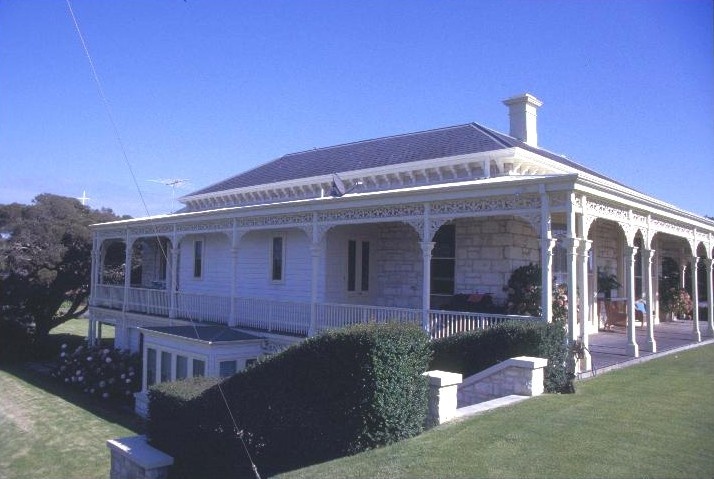
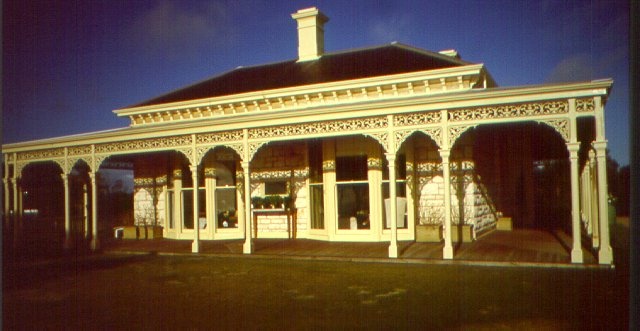
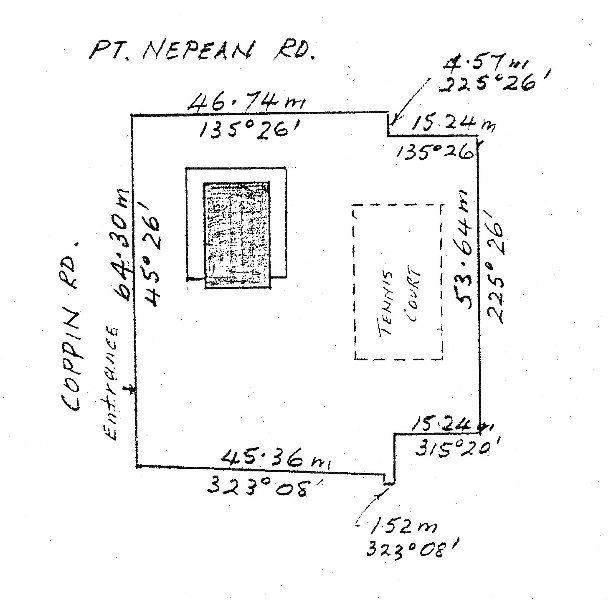
Statement of Significance
The Anchorage is a Victorian villa constructed in 1873 in the local limestone as a holiday house for the comedian, politician, philanthropist and businessman, George Coppin (1819-1906), and his family. The property, which overlooks the town, included a small theatre in the basement which is no longer extant.
How is it significant?
The Anchorage is historically and architecturally significant to the State of Victoria.
Why is it significant?
The Anchorage is historically significant to the State of Victoria for its association with George Coppin, comedian and theatrical entrepreneur, whose enterprise was largely responsible for the development of Sorrento from the 1870s to the 1890s as a seaside resort. Coppin organised a number of business ventures to encourage tourism. The companies of which he was a partner invested in the Sorrento Tramway which carried visitors from the Sorrento Pier to the Back Beach, and in the ferries bringing visitors from Melbourne, built the Continental Hotel and its adjacent ballroom, and the Sorrento Hotel , as well as the Sorrento Baths (1875). Coppin as politician, businessman and philanthropist was associated with numerous public and private ventures in Victoria in charitable, cultural and business enterprises.
The Anchorage is architecturally significant as a representative and substantially intact example of an 1870s holiday house constructed of the local limestone in the seaside resort of Sorrento on a prominent site overlooking the town.
-
-
THE ANCHORAGE - History
Contextual History:
George Coppin
George Coppin was born at Steyning in Sussex, England on 8 April 1819 into a theatrical family. His father was disowned by his family for abandoning his medical studies to join a band of strolling players . As a young child, George was part of the world of the travelling theatre, and by the age of 16 had chosen acting as his career. In 1842, with actress Maria Watkins Burroughs, he left England for Australia, arriving in Sydney on 10 March 1843. Coppin negotiated a season at the Royal Victoria Theatre and with his profits, bought a hotel. This venture failed and he left Sydney for Hobart in January 1845. He soon formed his own company, playing in Launceston and then Melbourne and Adelaide. Coppin prospered in Adelaide, with interests in a hotel, racing and copper mining. In 1848, Maria, with whom he had lived since 1842, died after a brief illness.
In 1851, the exodus from Adelaide to the Victorian goldfields and the collapse of Coppin’s mining investments caused his insolvency. He left for the goldfields himself and soon realised the opportunities for the theatre in Geelong, where successful miners formed appreciative audiences. He was able to pay his Adelaide creditors in full by 1853.
In the same year he left for a visit to England where he engaged tragedian G. V. Brooke for an Australian tour. Returning to Melbourne in December 1854, Coppin held a successful season in the Queen’s Theatre. Brooke arrived in February 1855 to play Othello. In July 1855, Coppin opened a prefabricated building he had purchased in Manchester as the Olympic Theatre, locally known as the Iron Pot. Brooke and Coppin went into partnership later that year, and soon controlled the Olympic, the Theatre Royal, the Cremorne Gardens Amusement Park, Astley’s Amphitheatre (later the Princess Theatre) and four hotels. Coppin married Brooke’s sister-in-law, Harriet Hilsden, nee Bray in August 1855.
Coppin was instrumental in the foundation of the Victorian Humane Society, the St. John's Ambulance Service, and the Australasian Dramatic and Musical Association: and he became the first grand master of the Freemasons in Victoria. He established free dispensaries in Richmond and in 1885, with the Rev. Charles Strong, formed the Improved Dwellings and Lodging House Company to erect a tenement for working class families between Lonsdale and Little Bourke Streets. It was later converted to a lodging house for single men known as Gordon House.
Coppin's career as a politician, first in the Richmond Municipal Council, and later in the Victorian Parliament brought him into contact with many influential men in business and political circles.
Sorrento
Sorrento was the site for Victoria’s first settlement in 1803, when David Collins on HMS Calcutta landed at Sullivan’s Bay. He attempted to found a penal colony with three hundred convicts but by 1804 the party was removed to Van Diemen’s Land.
The exact date of permanent settlement at Sorrento is not known but limeburning was being carried on in 1840 and a number of limeburning kilns were established along the shore by 1855.
In 1870, Coppin brought a group of businessmen to Sorrento by steamer to interest them in the development of the town as a tourist destination. He became involved in a number of public and commercial ventures to develop the town. He instigated the Ocean Amphitheatre Company (1874), the Sorrento & Queenscliffe Navigation Company (1874), the Sorrento Continental Hotel Company (1875), the Sorrento Tramway Trust (1875), the Ocean Park Trust (1875), the Mechanics Institute Trust (1876) and the Sorrento Park Trust (1874). His companies purchased most of the township area of 225 acres, subdividing it into household blocks for re-sale, and built six demonstration houses.
The Sorrento & Queenscliffe Navigation Company was very successful in improving access to Sorrento. By 1876, three steamers were running to the town and were landing more than 1000 people a day. Later steamers, such as the Ozone, introduced in 1880, could carry eight hundred passengers, and the Hygeia, introduced in 1890, fifteen hundred.
History of Place:
The Anchorage was constructed in 1873 as a holiday house for George Coppin by local contractor John Farnsworth with the help of Mr Leniker. The residence in a prominent position in the town was used by Coppin as a holiday house for his own family and for his many guests for over thirty years.
After Coppin’s death in 1906, the house continued to be used by the Coppin family until the death of Lucy Coppin in 1960. Lucy Coppin made a practice of inviting the residents of the Old Colonists retirement village in North Fitzroy for an annual visit to Sorrento. The visitors arrived by steamer, were given lunch at one of the hotels, taken on the tram to the Back Beach and entertained at “The Anchorage” for afternoon tea. They returned to Melbourne on the steamer at the end of the day.
Associated People: Owner GEORGE COPPIN; Assoc.People RESIDENCE OF GEORGE COPPIN, PROM & DEV OF SORRENTOTHE ANCHORAGE - Plaque Citation
This Victorian villa was constructed in 1873 of local limestone and is significant for its association with comedian, theatrical entrepreneur, politician and businessman George Coppin (1819-1906).
THE ANCHORAGE - Assessment Against Criteria
a. The historical importance, association with or relationship to Victoria's history of the place or object
The Anchorage is historically significant to the State of Victoria because of its association with George Coppin as an influential figure in Victoria's history. Coppin's contribution to the political, cultural and social life of Victoria was evident in a large number of charitable, cultural, and business enterprises for over fifty years. The building is historically important at a State level in its relationship to the seaside resort of Sorrento and Coppin's role in its development.
b. The importance of a place or object in demonstrating rarity or uniqueness
N/A
c.The place or object's potential to educate, illustrate or provide further scientific investigation in relation to Victoria's cultural heritage
N/Ad.The importance of a place or object in exhibiting the principal characteristics or the representative nature of a place or object as part of a class or type of places or objects
The Anchorage is a representative example of a seaside holiday house of the 1870s.
e.The importance of the place or object in exhibiting good design or aesthetic characteristics and/or in exhibiting a richness, diversity or unusual integration of features
The Anchorage is important in exhibiting good design and an unusual integration of features in its local variation of the Victorian domestic style in limestone construction characteristic of the Sorrento area.
f. The importance of the place or object in demonstrating or being associated with scientific or technical innovations or achievements
N/Ag.The importance of the place or object in demonstrating social or cultural associations
The Anchorage demonstrates social associations to the figure of Coppin within the local history of Sorrento, and on a state level, in the development of the seaside resort of Sorrento.
h.Any other matter which the Council deems relevant to the determination of cultural heritage significance
THE ANCHORAGE - Permit Exemptions
General Exemptions:General exemptions apply to all places and objects included in the Victorian Heritage Register (VHR). General exemptions have been designed to allow everyday activities, maintenance and changes to your property, which don’t harm its cultural heritage significance, to proceed without the need to obtain approvals under the Heritage Act 2017.Places of worship: In some circumstances, you can alter a place of worship to accommodate religious practices without a permit, but you must notify the Executive Director of Heritage Victoria before you start the works or activities at least 20 business days before the works or activities are to commence.Subdivision/consolidation: Permit exemptions exist for some subdivisions and consolidations. If the subdivision or consolidation is in accordance with a planning permit granted under Part 4 of the Planning and Environment Act 1987 and the application for the planning permit was referred to the Executive Director of Heritage Victoria as a determining referral authority, a permit is not required.Specific exemptions may also apply to your registered place or object. If applicable, these are listed below. Specific exemptions are tailored to the conservation and management needs of an individual registered place or object and set out works and activities that are exempt from the requirements of a permit. Specific exemptions prevail if they conflict with general exemptions. Find out more about heritage permit exemptions here.Specific Exemptions:General Conditions:
1. All alterations are to be planned and carried out in a manner which prevents damage to the fabric of the registered place or object.
2. Should it become apparent during further inspection or the carrying out of alterations that original or previously hidden or inaccessible details of the place or object are revealed which relate to the significance of the place or object, then the exemption covering such alteration shall cease and the Executive Director shall be notified as soon as possible.
3. If there is a conservation policy and plan approved by the Executive Director, all works shall be in accordance with it.
4. Nothing in this declaration prevents the Executive Director from amending or rescinding all or any of the permit exemptions.
5. Nothing in this declaration exempts owners or their agents from the responsibility to seek relevant planning or building permits from the responsible authority where applicable.
Exterior
* Minor repairs and maintenance which replace like with like.
* Removal of extraneous items such as air conditioners, pipework, ducting, wiring, antennae, aerials etc, and making good.
* Installation or repair of damp proofing by either injection method or grouted pocket method.
* Repair or replacement of fences and gates.
* Regular garden maintenance.
* Installation, removal and replacement of garden watering systems.
* Laying and repair of gravel toppings to the driveways.
Residence Interior
* Installation, removal or replacement of curtain track, rods, blinds and other window dressings.
* Installation, removal or replacement of hooks, nails and other devices for the hanging of mirrors, paintings and other wall mounted artworks.
* Removal of paint from originally unpainted or oiled joinery, doors, architraves and skirtings.
* Painting of previously painted walls and ceiling provided that preparation or painting does not remove evidence of the original painting or other decorative scheme.
* Installation, removal or replacement of carpets and flexible floor coverings.
* Installation, removal or replacement of ducted, hydronic or concealed radiant type heating provided that the installation does not damage existing skirtings and architraves and provided that the location of the heating unit is concealed from view.
* Installation, removal or replacement of kitchen benches, cupboards and fixtures including sinks, stoves, ovens refrigerators, dishwashers etc and associated plumbing and wiring, provided that the existing masonry structure of the building core, including the old stove alcove, remains in place.
* Refurbishment of existing bathrooms, toilets and or en suites including removal, installation or replacement of sanitary fixtures and associated piping, mirrors, wall and floor coverings.
* Installation, removal and replacement of electrical wiring provided that all new wiring is fully concealed.
* Installation, removal and replacement of bulk insulation in the roof space.THE ANCHORAGE - Permit Exemption Policy
The cultural heritage significance of The Anchorage is principally due to its historical and architectural associations. The building has architectural significance as a good example of its type.
The exemptions policy recognises that some alterations have occurred, mainly to the interior of the building, and that further upgrading of service spaces will take place in the future. The purpose of the permit exemptions is to allow works that do not impact on the significance of the place to occur without the need for a permit. Alterations that impact on the significance of the exterior and interior are subject to permit applications
-
-
-
-
-
CONTINENTAL HOTEL
 Victorian Heritage Register H1896
Victorian Heritage Register H1896 -
ATHENAEUM
 Victorian Heritage Register H2227
Victorian Heritage Register H2227 -
BAKERS LIME KILN
 Victorian Heritage Inventory
Victorian Heritage Inventory
-
'Boonderoo', House and Outbuildings
 Greater Bendigo City
Greater Bendigo City -
'Riverslea' house
 Greater Bendigo City
Greater Bendigo City -
1 Adam Street
 Yarra City
Yarra City
-
-






